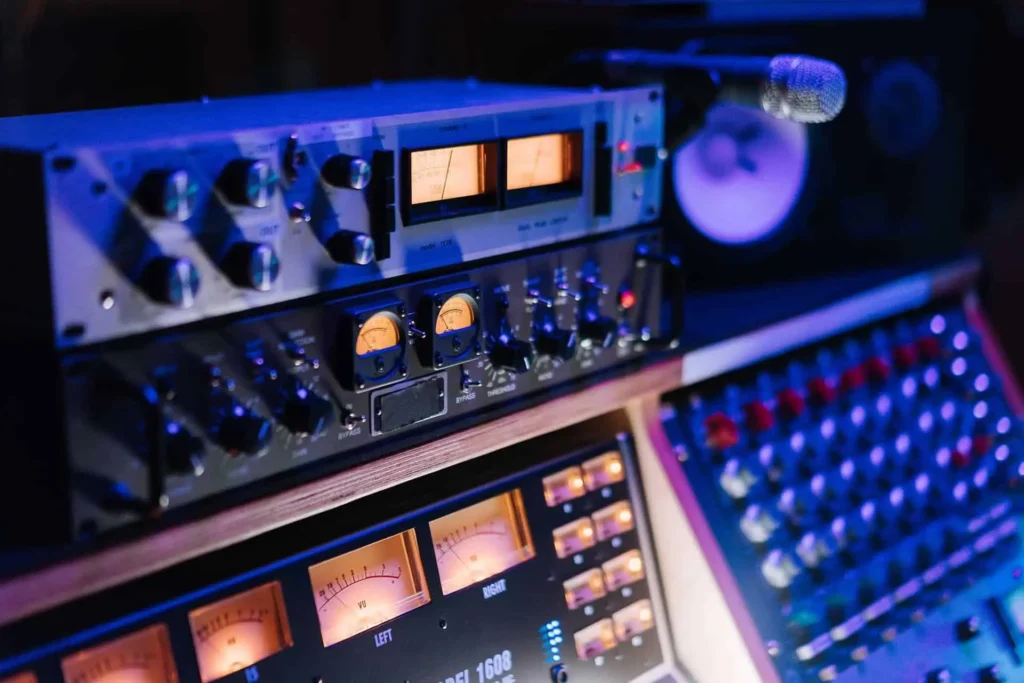Sound identity has become an essential lever for differentiation, and it’s tempting to take inspiration from leading brands or current trends. However, this approach can quickly become a brake on your uniqueness. If you want to create a sound identity that stands out and reinforces your brand image, it’ s crucial to focus on authenticity and innovation.

The trap of recurring musical patterns
In certain sectors, such as banking or insurance, brands often resort to the same sound reflexes: light melodies, soothing sounds or classical orchestral arrangements. These choices, while reassuring, end up making brands interchangeable in the eyes of consumers. A successful sound identity should be immediately recognisable and uniquely associated with your brand.
By reproducing your competitors’ codes, you risk diluting your message and losing the opportunity to make a lasting impression on your audience. The redundancy of musical choices in a sector is an opportunity: it gives you the chance to surprise by breaking with these codes.

The importance of originality in a saturated world of sound
Today’s consumers are exposed to a multitude of sounds and messages. To stand out in this saturated environment, it has become essential to stand out from the crowd. An original sound identity is a powerful differentiation tool, but it requires thought and courage. It means exploring tones or instruments rarely used in your sector, or developing a sound signature that faithfully reflects the uniqueness of your brand.
For example, a car brand might choose revisited mechanical sounds, while a technology company might explore innovative digital textures to express its expertise. The important thing is to find sounds that embody your identity without following the beaten track.

When trends become traps
Relying on a musical trend may seem seductive. After all, trendy sounds attract and resonate with a wide audience. But it can be a risky choice. Trends, by definition, are ephemeral. What is synonymous with modernity today can quickly become obsolete. A sound identity, on the other hand, needs to be a long-term proposition, capable of evolving in line with your brand.
To avoid this pitfall, it’s best to focus on elements that are timeless and in line with your values. For example, a brand that advocates sustainability would benefit from using organic or natural sounds, rather than giving in to the call of ephemeral electronic rhythms.

Embodying your uniqueness
The ultimate aim of a sound identity is to reflect what makes your brand unique. Each sound element must tell a story, convey an emotion or evoke a specific image. This cannot be achieved by replicating what other brands are doing. Take the time to think about your DNA, your mission and your values, and then try to translate them into sound.
Ask yourself some key questions: What emotions do you want to evoke? What values do you want to communicate? What perception should your audience have when they hear your signature sound? These questions will enable you to think outside the box and design a truly memorable sound identity.

Conclusion: Create, don’t imitate!
Sound identity is an exceptional opportunity to create a strong emotional bond with your audience. By avoiding clichés and trends, you can give your brand a unique sound signature that will resonate with your consumers for a long time to come. Don’t be afraid to break with convention and invent your own musical codes. That’s how you’ll stand out from the crowd and make a real impact!
At Brandy Sound, we don’t just make noise, we create THE difference that will thrill your audience. Ready to transform your sound identity into a truly distinctive asset? We’re already in the starting-blocks!
